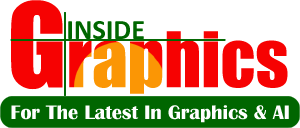1. Color Theory
Understanding the Basics:
- Color Wheel: Primary, secondary, and tertiary colors.
- Color Harmonies: Complementary, analogous, triadic, and monochromatic schemes.
- Warm vs. Cool Colors: Emotional and psychological impact.
Advanced Concepts:
- Color Psychology: How colors influence mood and perception.
- Cultural Significance of Colors: Variations in color meaning across cultures (e.g., red in Western vs. Asian contexts).
- Shades, Tints, and Tones: How to create depth and contrast.
Practical Tutorials:
- Creating palettes using online tools (e.g., Adobe Color).
- Matching colors for branding and marketing materials.
- Fixing common mistakes like clashing colors or oversaturation.
Interactive Features:
- A live color wheel tool where users can experiment with color harmonies.
- A palette generator based on user-uploaded images.
2. Typography
Basics:
- Font Anatomy: Understanding terms like serif, sans-serif, baseline, kerning, tracking, and leading.
- Font Pairing: How to combine fonts for visual harmony (e.g., heading vs. body text).
- Readability and Accessibility: Importance of font size, spacing, and color contrast.
Advanced Topics:
- Custom Typography: Designing your own fonts.
- Typography in Branding: Using typography to convey brand identity (formal, modern, playful, etc.).
- Responsive Typography: Adjusting typography for different screen sizes and devices.
Practical Tutorials:
- Choosing fonts for different types of projects (websites, logos, posters).
- Fixing common issues like bad kerning or unbalanced layouts.
- Experimenting with AI tools to suggest font pairings.
Interactive Features:
- A typography sandbox where users can test font combinations.
- Font contrast checker for accessibility compliance.
3. Composition and Layout
Core Principles:
- Balance: Symmetrical vs. asymmetrical design.
- Hierarchy: Leading the viewer’s eye through size, color, and placement.
- White Space (Negative Space): Creating breathing room and focus.
- Alignment: Ensuring elements are visually connected.
Advanced Topics:
- Golden Ratio and Grid Systems: Designing with precision.
- Dynamic Layouts: Adapting traditional principles for interactive and responsive designs.
- Storytelling Through Layout: Arranging visuals to narrate a clear story.
Practical Tutorials:
- Designing layouts for posters, websites, and mobile apps.
- Using grid systems for consistent spacing and alignment.
- Best practices for multi-page design projects like brochures.
Interactive Features:
- Grid overlay tool to test your design alignment.
- Tutorials with drag-and-drop exercises for layouts.
4. Contrast and Visual Hierarchy
Core Concepts:
- Using contrast to create focus (e.g., size, color, texture).
- Organizing elements by importance (e.g., headlines vs. body text).
Advanced Techniques:
- Layering images and text to guide the viewer’s eye.
- Experimenting with depth using shadows, gradients, and 3D elements.
Interactive Features:
- A “fix the hierarchy” tool where users arrange elements for better readability.
5. Branding and Consistency
Key Elements:
- Maintaining consistent visual identity (colors, fonts, spacing).
- Developing reusable design systems (e.g., component libraries).
Practical Applications:
- Case studies of famous brands and their design principles.
- Designing a brand kit using AI tools.
6. Accessibility in Design
Core Topics:
- Designing for colorblind users (color contrast guidelines).
- Using alt text for images and ensuring text is legible.
Practical Tutorials:
- Testing designs for accessibility compliance with online tools.
- Adapting existing designs for inclusivity.
Supporting Features for This Section:
- Interactive Design Demos:
- Tools to test color combinations, font pairings, and layouts.
- Case Studies:
- Breakdown of successful designs and why they work.
- Quizzes and Challenges:
- Test knowledge of design principles through interactive exercises.
- Downloadable Guides:
- PDF cheat sheets for quick reference on color theory, typography, and layout.

